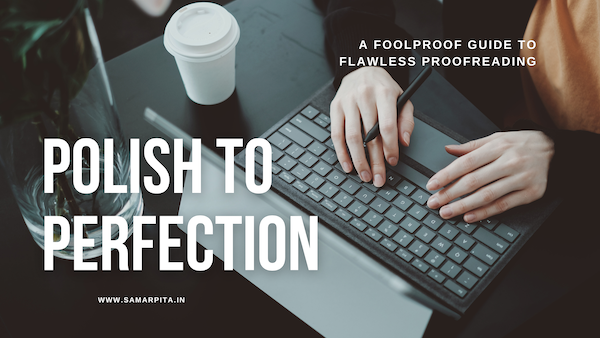Even the best writing can lose its impact with typos and errors. Proofreading transforms rough drafts into professional, polished pieces. Whether you’re crafting business emails, blog posts, or manuscripts, these step-by-step techniques will help you catch mistakes and elevate your writing.
Also Read: Manuscript Editing
Why Proofreading Matters
Errors undermine credibility. A single typo can distract readers or change your message entirely. Proofreading ensures clarity and professionalism in every piece you publish.
For businesses, clean copy builds trust with customers. For writers, it demonstrates attention to detail. Taking time to proofread makes the difference between good writing and great writing.
Step 1: Take a Break Before Proofreading
Fresh eyes spot more errors. After writing, step away for at least an hour—or overnight if possible. Distance helps you view the text objectively rather than reading what you meant to write.
Return to your work with renewed focus. You’ll catch mistakes you previously overlooked.
Also Read: Optimize for Impact: Tailoring Social Posts for Each Platform
Step 2: Read Aloud
Hearing your words reveals awkward phrasing and missing punctuation. Your ear catches what your eyes might skip. Listen for:
- Run-on sentences
- Missing or repeated words
- Clunky transitions
Reading aloud forces you to slow down and process each word. This simple trick dramatically improves accuracy.
Step 3: Check for Common Errors
Target these frequent mistakes:
- Homophones: Their/there/they’re, your/you’re
- Subject-verb agreement: “The team are” → “The team is”
- Comma splices: Joining two complete sentences with just a comma
- Apostrophe misuse: “It’s” vs. “its,” plural vs. possessive
Keep a personal checklist of errors you often make. Review it with every proofreading pass.
Step 4: Focus Line by Line
Use a ruler or blank sheet of paper to isolate each line as you read. This prevents skimming and forces concentration on every word. For digital documents, enlarge the text or change the font temporarily to make errors stand out.
Step 5: Backward Proofreading
Read your text from the last sentence to the first. This disrupts flow, making it easier to spot spelling and grammar mistakes rather than getting caught in the content.
While time-consuming for long documents, this method works exceptionally well for catching typos.
Step 6: Use Technology Wisely
Tools like Grammarly or Hemingway Editor catch many errors, but don’t rely on them completely. They miss contextual mistakes and sometimes suggest incorrect “corrections.”
Always review suggestions rather than accepting them blindly. Use spellcheck as a safety net, not a crutch.
Also Read: Measure Key Metrics to Track Social Media and Content Success
Step 7: Print It Out
Seeing words on paper reveals errors that screens hide. Mark up the printed copy with a red pen, then transfer corrections to your digital file. The tactile process improves focus.
Step 8: Verify Facts and Names
Double-check:
- Proper nouns (people, companies, places)
- Dates and statistics
- Hyperlinks (do they lead to the right page?)
- Consistency in terminology
Nothing damages credibility faster than incorrect details.
Step 9: Get a Second Pair of Eyes
Even professional proofreaders need editors. Ask a colleague or friend to review your work. New readers spot issues you’ve become blind to through familiarity.
If working alone, try text-to-speech software to hear your writing read by an impartial voice.
Step 10: Final Format Check
Before publishing or sending:
- Ensure consistent font styles and sizes
- Check paragraph spacing
- Verify heading hierarchy
- Confirm bullet point alignment
Clean formatting makes your content look as professional as it reads.
Also Read: LinkedIn for Growth: Best Practices to Elevate Your Business
Proofreading Shortcuts That Work
- Color-code edits: Use different highlighters for grammar, spelling, and flow issues
- Set a timer: Proofread in 15-minute bursts to maintain focus
- Change locations: Move to a new workspace to reset your attention
- Use search functions: Ctrl+F to find overused words or phrases
Common Pitfalls to Avoid
- Rushing: Proofreading requires slow, deliberate reading
- Overconfidence: Everyone makes mistakes—assume yours exist
- Distractions: Silence notifications and find a quiet space
- Skipping steps: Each technique catches different error types
The Proofreader’s Mindset
Approach proofreading as a detective hunting for clues rather than a writer reviewing their work. Stay skeptical and methodical. Celebrate found errors—each one fixed strengthens your writing.
Final Checklist Before Publishing
- Spelling and grammar
- Punctuation and capitalization
- Consistent tense and tone
- Accurate facts and names
- Proper formatting
- Working links
Beyond Error-Catching
Excellent proofreading also improves:
- Clarity of ideas
- Flow between sentences
- Appropriate word choice
- Overall readability
View proofreading as quality control for your ideas, not just a typo hunt.
The Impact of Perfect Proofreading
Flawless writing:
- Builds trust with readers
- Communicates ideas effectively
- Reflects professionalism
- Prevents misunderstandings
In business, clean copy can mean the difference between winning or losing clients. For writers, it separates amateurs from professionals.
Final Thoughts
Proofreading transforms writing from good to exceptional. By following these steps systematically, you’ll catch errors others miss. Remember that proofreading is a skill that improves with practice—the more you do it, the sharper your eye becomes.
Great writing deserves great proofreading. Invest the time to polish your work, and your readers will notice the difference. Your words are worth it.
Start applying these techniques today. Your next piece could be your cleanest, most professional work yet.
I’m participating in #BlogchatterA2Z.
———————————————————————
Are you a coach or business owner looking for a content writer for your website or social media? I can help you create compelling, high-quality content that drives results. Reach out to me at editor@samarpita.in. You can also connect with me on Instagram @samarpita and X @samarpitadotin. Visit my website www.samarpita.in to learn more about my services.


